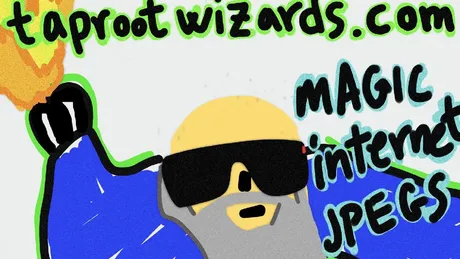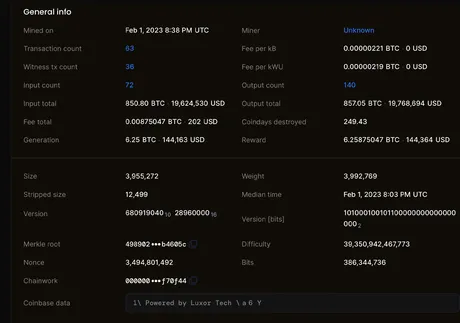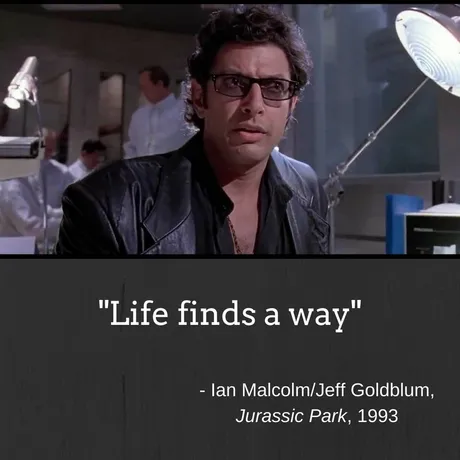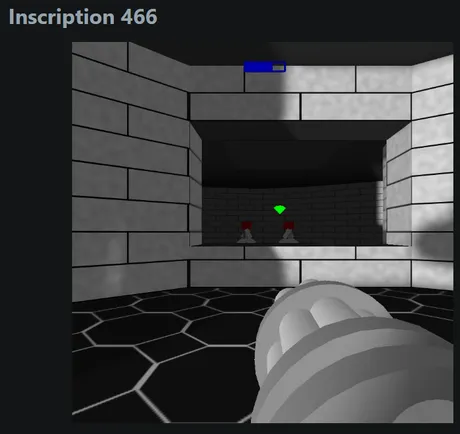
A couple day ago shockwaves were sent through the Bitcoin network. Some math ninjas initiated their magic, hijacked a Bitcoin block, and posted a huge NFT/advertisement to the Bitcoin blockchain at block-height #774628.
See for yourself
We can see that this block is 377% "over capacity" which means that even though the block size limit on Bitcoin is around 1MB the math ninja trolls were able to jack it up almost x4 the size it should have been. Previously the world-record for biggest block was something like 2.77 MB, so this one completely blows it out of the water.

Bitcoin Records Largest Mined Block to Date, 4 MB Block Containing NFT Causes Unease Among Small-Block Supporters
Essentially, Taproot allows multiple participants in a transaction to create a single combined digital signature, making transactions more efficient and private. Since the creation of Ordinals, it has been discovered that using a Segregated Witness (Segwit) “discount” in combination with Taproot allows for a full block to be 4 MB in size, bypassing the 1 MB limit encoded in the Bitcoin blockchain.
Double whammy
The implications of this situation are interesting. You can be damn sure that Bitcoin Core devs won't implement another upgrade to the system without thinking about it a bit more. Every time they make an upgrade it allows these kinds of hacks that make the blocks bigger, in this case both of the biggest upgrades were used in conjunction to magnify each other. But hey let's be honest this is probably a good thing. Bitcoin needs bigger blocks anyway.

Meanwhile, Ordinals were already controversial among some bitcoin maximalists, and the 4 MB block mined with only 63 transactions and a Wizard JPEG caused further upset. For instance, bitcoin developer Luke Dashjr, who called Ordinals an “attack,” quickly created a node patch to filter or censor Ordinal “spam.” “NOT a protocol change or soft fork/hard fork, just a harmless (if it works right) spam filter,” Dashjr wrote. “Also a quick hack and NOT suitable for opening a PR to Core – please write a proper fix for that.”
In response to these recent events, it looks like angry Bitcoin devs are creating code that allows miners to censor these kinds of transactions from the blocks they produce. This is obviously a slippery slope that makes it easier for the powers that be to move in and censor perfectly valid transactions that they don't like. It's a largely hypocritical move, but then again maximalists are like the definition of hypocritical, so no surprises there.
The only rule for posting data to the Bitcoin blockchain is that the correct hash is found. If you're not the one who found the hash then you must pay the person who did the appropriate amount to financially incentivize them to post your data to the chain. How much did this "attack" on Bitcoin cost? Well we can see that the total cost of the block was around $200, so not very much. Probably around $200 considering there weren't a lot of other transactions on the block they hijacked.
Although it is also unclear exactly how much collusion went on between the Ordinals and miners responsible for the block. Did they pay extra to get more hash power? Was that cost subsidized by the block reward? Did they actually make money? Probably not, but the details are unclear. Then again the details don't matter much in the global scheme of things.
Another individual agreed with this opinion and argued that the Taproot scheme that produced a 4 MB block was dangerous. “Yeah … This is rather dangerous. We’re one bad actor or one automated miner away from cementing vile and disgusting things to a permanent, globally distributed, uncensorable database. It will be interesting to see if there is a free market solution to this.”
I think this is a massive overexaggeration considering that only text can be posted to the chain (just like Hive). Sure, one might store text that points to child porn or text that can be processed into child porn or whatever else, but the raw text can never be "vile" or "illegal". It requires secondary processing with an algorithm to turn the text into vile content. A picture isn't illegal when it's not a picture, or is it? Still this isn't an issue we should ignore, even if it may be exaggerated by the current players.
Another question we must ask is if it even matters. If content on the Bitcoin blockchain was deemed 'illegal' by nation states, isn't that the exact scenario that many are expecting anyway? :: That crypto will legitimately threaten nation-states and that in response nation-states are going to make it illegal somewhere down the line no matter what the circumstances are? How is this scenario different than that one? All roads lead to Rome.
In addition to the stir caused by the Wizard-block Ordinal, an unsavory image was inscribed into inscription #668. Although the image was removed from the Ordinals website, it remains immutable and cannot be removed from the Bitcoin blockchain. Furthermore, a game, “DOOM,” was uploaded to the blockchain and can be found in inscription #466.
Wait what was the unsavory image?
I searched Google and it seemed to be a bit scrubbed from there as well, but it does appear to be "shock porn".
Bitcoin Ordinals creator looks for fix after first instance of shock porn
Oh shit I think I actually saw this when it happened. Someone put "goatse" up there.
If you don't know what it is it's like a super famous one from back in the day of a guy stretching a certain orifice to absolutely inhuman levels.
It's pretty gross.

YIKES!
This is the perfect example of why none of this stuff is actually on the Bitcoin blockchain. If you have to run the raw text through a simulator to get the image, than neither the raw text or the simulator is illegal. How quickly that people seem to forget that text and code are protected under freedom-of-speech law.
However, the combination of raw-text fed into the simulator can be illegal. Code is never illegal, but the execution of that code absolutely can be given the proper context. Again, the most obvious example to give is child porn. But we have to remember that it is only the combination of everything that creates the illegal outcome, and that none of the pieces by themselves are illegal. Essentially this is confirmation that the maximalists opposed to such things are indeed simply alarmists who seem to be willfully bending the truth of the matter. Or maybe they actually really don't know? Seems unlikely to me, especially considering that we already have evidence that the Ordinals are willing to self-censor offensive content that isn't even illegal.

DOOM!
Inscription #466 contains a clone of the old first person shooter Doom. Unclear how much of the code actually exists on Bitcoin or if it's just a link to the code. Considering the graphics are even worse than the original game it probably is directly on chain. Kinda cool.
Conclusion
Very interesting situation to be sure. "Life finds a way!" The Bitcoin blockchain needs bigger blocks than 1 MB, and even though the limit is 1 MB we see a 4 MB block using the current toolset available. Pretty crazy if you ask me.
Many Maximalists are making a big fuss over all of this, and even more are rightfully claiming that this is simply the natural progression of the network. There is no such thing as "invalid" code posted to Bitcoin, because labeling something as "invalid" would require a centralized arbiter to decide such things. Those who oppose this development will try to make a decentralized arbiter to stop it, but that's intrinsically going to fail and will only slow down data being posted to the blocks minted by those who support this type of censorship. Those who support the data will mint it on their own blocks. Welcome to your own censorship resistance, maximalists.
Posted Using LeoFinance Beta
Return from The 4 Megabyte Bitcoin Block to edicted's Web3 Blog
